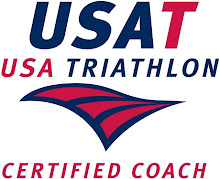It might be O'dark thirty in the morning, cold and a bit snowy, but are you getting them in? Goin' the right pace? Grab some warm EmergnC and cuttle up with this tidbit of base mile info.
What are they really? Base miles are done at a low intensity that allows you to talk comfortably with a friend. No matter what event you are training for or your experience level, this kind of run should be an arrow in the quiver of every endurance athlete. It doesn’t have to be long every time you go, but it does have to be slow enough to give your body the memo, “Hey, make some more of those oxygen carrying mitochondria and enzymes so I can run even longer and eventually faster at this easy pace.”
Base miles have many names like:
Zone 2 (according to heart rate training,)
65-70% of Max Heart rate (again a heart rate monitor reference)
RPE (Borg rating of Perceived Exertion) of 9, 10 or 11—This is based on a scale up to 20
Long Slow Distance (LSD-not a drug reference although it can be euphoric)
50-60% max effort
Whatever you call it, it still means the same thing. Run slow enough to talk to your friend at an effort that feels like about 50-60% of your maximum effort (even though your pulse will be higher as mentioned above). Most new runners, and many experienced runners too, make the mistake of going too fast. So make sure to check your effort more carefully. You should actually enjoy this run! There has been more than one person who has said that they DON’T like running or can’t go very far until I take them out and teach them what this pace REALLY is. What do I do with them? Let them run a pace that allows us to chat for about 30 minutes straight. Talk about renewed hope! They all actually confess that they had no idea about how to do this and come back later to say they are happily running an hour or more using this new approach.
For a more experienced runner and/or a triathlete, this type of run is still very important. Way too many athletes are stuck running just a bit too fast on easy days. And when they finally do slow down into the right zone, they feel like running with a paper bag over their head because it is "SOO SLOW!" But, If you don’t slow down on easy days or your weekly long runs of 75-90 minutes (or more if you are doing a marathon,) then you will lose that aerobic capacity you are trying to cultivate and you will also not ever get fully recovered from faster and harder runs. By this point in your progression as a runner, you should have spent at least some time with a heart rate monitor, know your training zone numbers and then make extra sure to run your easy days under the Zone 2 or 70% ceiling. If you do this, you will feel a whole lot better come those harder days. If you still have not nailed down these numbers, then now is probably a good time to find out. Until then, "easy conversation pace" is the order of the day.
The next line of questions most runners ask is, “What kind of run then should I do for a hard day this time of year? Should I be doing anything fast at all? or Am I too new to try any type of hard run?” We will talk more about that next week!









1 comment:
Thank you for this - it's just what I needed today. I got used to running fast last summer, but now that I'm gearing up for my first marathon, I've been a bit frustrated by feeling like I'm going slow on my long runs. Keep up the good blogging...I need all the help I can get! Could you do something on nutrition past the two hour mark?
Post a Comment